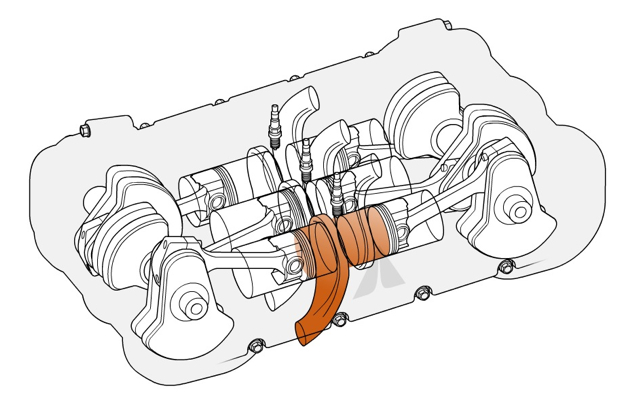nendo: scatter shelf
by: Designboom - Weblog, 2011-08-25 15:51:00 UTC

a storage unit composed of 5mm black acrylic shelves arranged in a grid form, stacked in three layers and slightly displaced.
read more
TED: Alex Steffen: The shareable future of cities - Alex Steffen (2011)
by: TEDTalks (video), 2011-08-08 15:49:51 UTC
How can cities help save the future? Alex Steffen shows some cool neighborhood-based green projects that expand our access to things we want and need -- while reducing the time we spend in cars.
 How to save green tech from crashing
How to save green tech from crashing
by: Gizmodo , 2011-08-26 11:00:00 UTC
There's a real risk that innovation in green technologies will slow for lack of money and interest. Here's why we need a leaner, meaner green tech 2.0.
Turning Wartime T-Walls into Iraqi Affordable Housing
by: TreeHugger Design, 2011-08-28 01:05:01 UTC
 Natural wind tower in housing project in Basrah, Iraq. Rendering by New World Design.
Natural wind tower in housing project in Basrah, Iraq. Rendering by New World Design.
At a
Pecha Kucha session during this summer's
Dwell on Design conference, I was inspired by a series of seven 7-minute presentations proposed on the theme of "Regeneration."
Dwell magazine editors partnered with
Arc... Read the full story on TreeHugger
Putting Old Tech In The Internal Combustion Engine Nets One-Third More Mileage
by: fast company, 2011-08-26 21:38:21 UTC
Using an engine design that was largely abandoned after World War II, new engines find fuel savings where big auto companies--weighed down by the inertia of their designs--can't.

Decades of refining today's automobile engine technology has come to this: We're investing more and more, but getting less and less in terms of efficiency, performance, and durability. What if we took a wrong turn with the internal combustion engine?
Pinnacle Engines thinks we did. Its founder, James Cleeves, a former semi-conductor engineer, has spent the last three decades reconfiguring engines to achieve what Pinnacle calls a "fundamentally more efficient architecture" with 30% greater fuel mileage compared to traditional engines in tests. The final product is a powertrain that cuts fuel consumption and greenhouse gas emissions without increasing the vehicle cost or pollution compared to today's vehicles.
Pinnacle's apparent breakthrough is a four-stroke, opposed-piston engine with sleeve-valve technologies that were once installed in World War II fighter planes. The designs' early 20th-century incarnations were unable to meet post-war pollution and efficiency standards, and were largely abandoned. But when put together with some modern engineering, the technologies' original virtues--smaller size, higher efficiency, reliable operation--can be had without their vices. Ron Hoge, CEO of Pinnacle Engines, says it was mostly a matter of breaking out of what came before. "I've run large multi-billion dollar companies, and the law of incrementalism is what drives you," he says. "You do the best with what you have."
Other companies are pushing the limits of what internal combustion engine can do with a gallon of fuel, too. EcoMotors, a Detroit startup backed by Bill Gates, and Achates Power, a San Diego engine startup, have deployed similar opposed piston technology to create more efficient internal engines (diesel, in their case) to compete with hybrids and electrics on the road.
Asia is a targeted market for this technology. Redesigned engines are harder to sell in the developed world where vehicle manufactures have already spent billions of dollars in R&D for conventional technology, and the premium on fuel savings are modest. "The developing world has no such luxury," says Hoge. Low incomes and high fuel prices make efficiency a necessity. The company plans to roll out more than 50,000 engines in Asia by 2013, mostly for motorcycles and three-wheel rickshaws, and other licensing deals with major manufacturers are in the works.
With millions of motorcycles, rickshaws, cars, and trucks expected to be sold worldwide, mostly in Asia, we may find India and China becoming the innovative vehicle proving ground for the rest of the world.
[Image: Pinnacle Engines]
Reach Michael J. Coren via Twitter or email.


 Lifeplayer: Sustainable Design for Sustaining Education
Lifeplayer: Sustainable Design for Sustaining Education
by: Sustainable Design News, 2011-08-22 09:51:21 UTC
 Radio broadcasts are a proven educational tool and remain an important communications medium in the developing world. However, the lack of electricity, weak signals, and the availability and cost of batteries limit radio access in many areas.
Radio broadcasts are a proven educational tool and remain an important communications medium in the developing world. However, the lack of electricity, weak signals, and the availability and cost of batteries limit radio access in many areas.
For these reasons, Lifeline Energy developed the Lifeplayer, a combination multi-band radio, MP3 player and recorder that runs off solar or wind-up power.



Results of the Design for the Real World Redux Competition
by: Sustainable Design News, 2011-08-22 10:22:04 UTC
 The Museum of Arts and Design in New York, the Victor J. Papanek Foundation at the University of Applied Arts Vienna, and the Austrian Cultural Forum New York announced the finalists and winners of the Design for the Real World - inaugural competition supporting environmentally sustainable and socially responsible design.
The Museum of Arts and Design in New York, the Victor J. Papanek Foundation at the University of Applied Arts Vienna, and the Austrian Cultural Forum New York announced the finalists and winners of the Design for the Real World - inaugural competition supporting environmentally sustainable and socially responsible design.
The Design for the Real World Redux international design competition was created to honor Victor J. Papanek, the acclaimed Austrian-born, American-trained designer and educator whose 1971 book "Design for the Real World" was one of the first to promote ecologically and socially responsible design.
The competition solicited entries from established, emerging, and student designers of projects that upheld Papanek's vision of environmental and/or social responsibility.



How An Innovative Bathhouse Keeps Rural China Healthy
by: Co.Design, 2011-08-26 02:08:27 UTC
When it comes to improving health care for residents in developing regions, solutions range from sourcing clean drinking water to administering affordable vaccinations. But in some cases, preventing the spread of disease can be as simple as providing a safe, sanitary place to take a shower. Beijing-based
BaO Architects designed the Split Bathhouse in rural China to fulfill that role while providing a relaxing place that has become the center of a community's social life.
The village of Shamen is located in the Gansu province, in the west of China, where most houses lack even the most basic needs, architect Benjamin Beller tells Co.Design. "People are not used to bathing. The village doesn't have running water so they use wells, which sometimes can be a bit far away." At most, says Beller, families will fetch a bucket of water that will be used for both cooking and cleaning, with bathing consisting of a communal washing in the courtyard. And even that depends on the season, as Gansu is located in an arid, mountainous region where water is scarce.

But the bigger problem was that the villagers had not made the connection between clean water and health. "It doesn't really occur to them that this problematic hygiene is the very source of most of their epidemics and discomfort," says Beller. The spread of disease had been even more rampant due to the use of the public dry toilets (basically, holes in the ground) without places to wash their hands afterward. Two years ago, the school had to be closed for several months because of a scabies epidemic.
After BaO was introduced to the challenge, the firm committed to working on the bathhouse pro bono and began the arduous task of finding funds. Collaborating with an association named
The Children of Madaifu, which subsidizes the living expenses of children who have lost their parents, BaO reached out to foundations, individuals, and governmental organizations to raise the 55,000 euros required for the project. The plan is to bring this model to other villages in rural China.
Working with a lean budget and limited resources, the Split Bathhouse manages to create a colorful, dignified bathing experience with the most basic materials -- most of the structure is made up of concrete, brick, and wood. A wide central corridor welcomes bathers into the space and functions as a greenhouse to keep bathers warm in cool weather, but can be opened at either end to allow for circulation as it heats up from the sun. A nice detail makes it feel more like wandering through a brightly colored forest: Holes in the roof allow the existing trees to poke through the top.

Inside, the bathhouse is divided into two spaces: green for men, and yellow for women, with shiny locker rooms that have as much personality as a high-class spa. Instead of a complicated ventilation system, the architects simply tilted the roofs of each building diagonally and added a series of vertical windows to let steam escape easily. And since BaO knew that people using the space would be doing more than just bathing, the architects added concrete benches and other surfaces for sitting, relaxing, and interacting. A large blackboard that covers the outside walls of the buildings provides a place for kids to play.
What also had to be put into place at the bathhouse was an infrastructural system that could procure, filter, and heat water without wasting the precious resource. Water is pumped from the ground via a well and warmed by solar heating modules on the roofs of the buildings before being piped into the showers. After passing through the bathhouses, wastewater is collected into a series of bamboo planters which use
rhizofiltration (passing water through plant roots to remove toxins) as a natural graywater reclamation system. In addition, the entire site is covered with permeable gravel, which allows any rainwater to filter directly into the ground. Beller also hopes that by introducing this technology to the village, residents might be able to learn from the systems and recreate them in their own homes.
The bathhouse has had a tremendous impact on the community, which has taken ownership in their new space, Beller says. "This pride was a very important point we wanted to develop, because making sure the villagers would care and cherish their equipment meant that they would do anything to sustain it and manage it well." The ritual of cleaning has now become a social event, and made the bathhouse the epicenter of community life. "They, of course, very much enjoy bathing and taking showers," Beller says. "From outside of the building most of the sound you would hear is laughter."
Can Pay-Per-Mile Driving Programs Work?
by: fast company, 2011-08-27 00:20:35 UTC
Transportation Secretary Ray LaHood got a spanking when he suggested one, but test programs have received positive responses from drivers. Like it or not, with gas tax revenue declining it may be the only option.

As vehicle fuel efficiency increases and hybrids become more popular, governments are running into a problem: they're making less money from gas taxes. One solution that has been tossed around for years is the vehicle miles traveled (VMT) program, which charges people fees based on how many miles they drive. It's a good way to both discourage driving and to put the tax burden of paying for roads on the people who use them most.
VMT initiatives have been implemented on a trial basis in the Netherlands, the United States, and elsewhere, but so far, no country or state has adopted a full-fledged VMT program, even though drivers who participate in pilot programs often support them (the programs could theoretically replace gas and vehicle taxes, as well as tolls). But it's hard to imagine that these programs will succeed in the near future.
By all accounts, a VMT program should have worked in the environmentally aware Netherlands. The country implemented a six-month trial in 2009 in the city of Eindhoven, where participants were given an Internet- and GPS-capable vehicle device that logged fuel efficiency, route, and time of day--and provided instant feedback to drivers. At the end of each month, drivers were presented with a bill that took into account time driven and costs of use. Trial participants didn't actually have to pay, but IBM found that 70% of drivers improved driving behavior by avoiding rush-hour traffic and opting to use highways instead of local roads.
The system was supposed to go nationwide in 2012, but it was nixed when a new government was elected in 2010.
Transportation Secretary Ray LaHood first expressed interest in a VMT
program in 2009 as a way to raise highway funds. But there was an uproar and the DOT quickly backtracked
on the idea, stating, "The policy of taxing motorists based on how many
miles they have traveled is not and will not be Obama administration
policy." The DOT did not, apparently, want to deal with a mob of angry
motorists who were worried that their vehicles would be outfitted with
tracking devices.
Despite the DOT's backtracking, VMT programs have, in fact, been tested in the U.S. Oregon piloted a program in 2007, and ultimately concluded that it was "workable and practical, a genuine alternative to the gasoline tax." Earier this year, a proposal in Oregon for a VMT charge exclusively for electric cars stalled in committee. Minnesota, Texas, and Oregon have all explored the idea, and Iowa is currently in the midst of a four-year VMT study. "I've heard that the test audiences really love [the Iowa program]," says Deron Lovaas, the NRDC's Federal Transportation Policy Director.
But can these studies ever make it out of the pilot stage and into the mainstream? "The state and federal gas tax took about a century to evolve so that they
are at levels that fund reasonable state transport programs and federal
transport programs," says Lovaas. "The only popular tax is no tax. Therefore, this is going to take a while. We're talking about a transition that will take decades."
There are a number of ways that a successful VMT fee could be implemented: recording mileage through the odometer, using more Big Brother-like GPS units, only charging trucks (Germany is doing this), or charging vehicles different different amounts based on efficiency (an SUV might be charged more than a Prius).
Regardless of what they end up looking like, the excitement for VMT fees isn't going away, especially in the revenue-hungry U.S. "For the first time in a long time, we're looking at declining gasoline consumption over time," explains Lovaas. "That's going to reduce transportation investments even more than they have already been reduced." Something is going to have to fill the gap.
[Image: Flickr user roens]
Reach Ariel Schwartz via Twitter or email.


 5 eco friendly cellphones helping keep your chats green
5 eco friendly cellphones helping keep your chats green
by: Ecofriend, 2011-08-27 11:35:08 UTC
Shaheen Akhtar:

Puma PhoneSolar powered cellphone
These days there is a buzz to save the environment with many people joining the green bandwagon. If you also want to do your bit for environment, then you can do that by using eco friendly cellphones, which are less harmful to environment. Here are the names of 5 eco friendly cellphones.
1. Samsung Blue Earth

Samsung Blue EarthSamsung Blue Earth
In 2009, Samsung unveiled a new eco friendly cellphone known as Blue-Earth. The new device has solar panels on its back. These panels trap solar energy which is used to charge the phone. Samsung has used recycled plastic to make the body of this device. The Blue Earth has energy-efficient mode called “Eco-Mode” and “Eco-Walk.”
2. Sharp Solar Hybrid Phone

Sharp Solar Hybrid PhoneSolar Powered Cellphone
Sharp has developed a duo of SH6220C and SH6228C feature a memory LCD, which is an energy-efficient display with high visibility in daylight. The phones feature a large 2.9-inch LCD screen and a 5MP autofocus camera. Moreover, the phone’s solar panels will provide one minute of talk time and 2 hours of standby for every 10 minutes in the sun.
3. Puma Phone

Puma PhoneSolar powered cellphone
Developed by Sagem Wireless for sports apparel manufacturer Puma, the Puma Phone can be charged via solar energy through a solar panel at the rear of the phone. The developers claim that one hour of sunlight could provide 15 minutes of talktime or 2 hours of music playback. On the spec side, the Puma phone features a 2.8 inch touchscreen with 240 X 320 QVGA resolution and a 3.2MP camera.
4. LG Pop

LG PopSolar Powered Cellphone
Developed by LG Electronics, the Pop is being touted to be the most compact 3-inch touchscreen phone ever made. In addition to a host of trendy features, the cellphone carries a large photovoltaic panel to charge the onboard battery on the move. The device is equipped with a 3MP camera and an 8GB internal memory that can be used to store several popular audio and video files.
5. Motorola A45Eco

Motorola A45 EcoEcofriendly cellphone
Unveiled at the Mobile World Congress 2010, The Motorola A45Eco has been made from recycled plastic bottles and features a sliding QWERTY keyboard, a 2MP camera, Bluetooth, FM radio, music player and a couple of games as well. This green cellphone offers 8.5 hours of talk time and 250 hours of standby time on a full recharge.












Comments by our Users
Be the first to write a comment for this item.